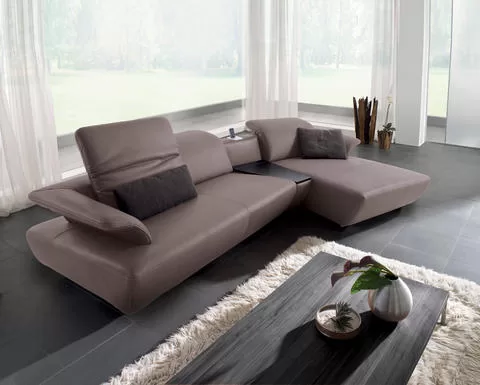Monday saw the opening of Living Kitchen 2014, as part of IMM Colgne, at the Kolnmesse Showgrounds. As the first “big” show of the year, (and this year is the 65th showing of IMM) it has been known as a forerunner and a bit of a trend setter for the next 12 months. This is an edited excerpt from one of their press releases and raises some interesting points.
“The current trends in the furnishing sector seem contradictory. On the one hand there is a continuing, strong demand for natural materials – and especially for wood: oak and vividly grained varieties supplemented by light woods such as ash or birch. Felt is also in great demand, and leather is enjoying growing popularity as well. On the other hand, people are in the mood for more colour again.
And because anything goes these days, it is precisely this penchant for combining different things that is the dominant trend: wood is being contrasted with strong colour accents, different types of wood are being used together and the natural look is being pepped up with brightly painted occasional furniture and with blatantly artificial elements and materials such as high-tech textiles, plastic chairs and futuristic structures.
This clash of design cultures can even be seen in one and the same piece of furniture, the elements of which appear to have been fragmented and then put back together again in a different way. Connections, joints, material collages and individually selectable combinations of various upholstery, textile and colour qualities for e.g. chairs are the distinguishing aesthetic features of many products – including (and especially) high-quality ones. Those who like things even more original or use regular trips to the flea market for trend-oriented forays will soon surround the dining table with a series of totally different chairs, armchairs and stools – it doesn’t matter, as long as it’s a change from the usual monotony. Wall units are also coming up with striking colour accents, which can sometimes even be positioned at will. Mix and match is the magic principle of individual and customisable furniture. 
Who wants to tie himself down to one style for decades? That might have been fine for our parents, but it’s not for us. Modern life is eventful, dynamic and changeable. Every few years, we are seized by the desire to give our lives and homes a good shake up. But does that mean getting rid of those lovely pieces? No, we’re not into that any more, it’s neither cool nor politically correct now that we have tired of the throwaway society (at least in certain areas) and are convinced of the importance of lasting and sustainable products. So how, in a fast-moving society, are we supposed to reconcile the desire for consistency with the urge to go with or against the flow?
Caught in this quandary, the consumer reaches for anything that can help him with his stylistic balancing act: individual pieces of furniture like re-editions or things with signs of wear and tear – whether they are genuine originals or simply have a “used” look for a faux-vintage effect – promise to create a story of their own or at least tell a few stories; wooden stools with crochet covers or steel chairs with cushions sporting folkloric patterns look as if they’ve been hand-made or inherited from Granny and are easy to change around as well. Puristic dining tables made of old wood salvaged from demolished buildings or old barns exude the charm of authentic history; mounted on a filigree iron base, they look old and modern at the same time. Furniture like this can be rearranged in new combinations time and time again; it can be contrasted with new colours – as in the “colour blocking” trend that is so popular right now – and even be given a different function. 
Do-it-yourself furniture and accessories are also extremely hip right now. Lacquer and LEDs, stencil and brush, needle and thread or just some snazzy new drawer knobs can all be used to give character pieces a helping hand. Handmade web portals help turn the dream of a self-crafted original into reality – be it a coat rack or a dresser. But it is also possible to buy furniture that leaves the factory fully equipped for individualisation and change. The customising principle is virtually almost a standard feature of upholstered furniture, which is offering an ever-wider choice of legs and coverings. Covers that can be replaced further down the line make it even easier for customers to indulge their desire for an update now and again. But shelving systems and cabinets with modules that can be reconfigured in next to no time are also offering an increasing range of variants and expressive options. Chairs with upholstered parts that can be selected in different colours and coverings open up new possibilities for individualisation and adapt readily to individual interior designs. And even lamps can be turned into individual structures by combining several modules.
It seems as if there is no limit to the possibilities. With the international furnishing show imm cologne leading the way, this year’s trade fairs will be demonstrating how much the furniture industry has already adapted to consumers’ conflicting desires. The spectrum of furniture styles, materials and functions will be one side of the coin, customisation options the other. The high number of re-editions and re-designs based on classic role models from Aalto to van de Velde is certainly grounds for optimism that the trend towards furniture with character and quality will continue. Experience has shown that classics like this can present themselves in a new light time and time again, even years down the line. That’s what today’s consumers dream of – things that never really get old.”
I feel this is a great insight – any thoughts?
We will bring you more images from Living Kitchen as they come to hand – for more information visit www.immcologne.com








































